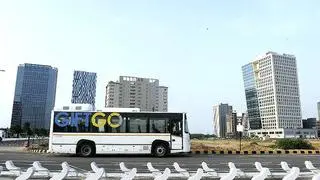The Karnataka Planters' Association (KPA) is planning to adopt the Vietnamese method — exclusive monocrop — of pepper cultivation.
“Pepper is grown exclusively as a monocrop in Vietnam with very high density planting on wooden poles, concrete pillars or brick pillars. We felt this model can be emulated in our coffee estates,” said Mr Sahadev Balakrishna, Chairman, KPA.
“This method can be adopted in few of our coffee estates to boost our productivity. We were pleasantly surprised to see the mind-boggling pepper productivity of Vietnam which is 2-2.5 tonnes per acre,” he added.
Recently, a 25-member KPA delegation led by Mr Sahadev Balakrishna , Mr Marvin Rodrigues (vice-chairman ) and Mr Nishant Gurjer (convener, scientific committee) visited the exclusive pepper growing area of Vietnam as part of their field visits to the coffee and pepper growing regions.
“We visited the Chu Se district in Gia Lai Province, which is the largest pepper growing region in the world. Vietnam grows more than 1.20 lakh tonnes of pepper and this region (Chu Se) alone grows more than one lakh tonnes of pepper. Whereas India grows a total of about 70,000 tonnes of pepper,” said Mr Balakrishna.
Talking about cultivation method, Mr Marvin Rodrigues said “Pepper is grown at a spacing of 2 metres by 2 metres which results in 1,000 pepper vines per acre. So even if a single pepper vine yields about three kg, the productivity per acre is incredibly high.”
“Just like in coffee, each and every pepper vine has got a basin system around the root for continuous irrigation during the dry season and heavy application of fertilisers. We however did find the odd pepper vines showing signs of being attacked by the pepper wilt disease,” he added.
“Rich volcanic soil coupled with highly intensive farming which primarily focuses on continuous irrigation and heavy application of fertilisers has resulted in the success story of coffee and pepper productivity in Vietnam,” Mr Nishant Gurjer, said.
In Vietnam, the Karnataka Planters' Association delegation also interacted with coffee traders who purchase coffee from the growers directly and visited fertiliser shops to get a better understanding of what exactly is being utilised and the costs.
“We also visited and interacted with coffee roasters and owners of coffee shops. Right throughout Vietnam, whether in small towns like Buon Me Thuat and Pleiku or in large cities like Ho Chi Minh City, we found numerous coffee shop chains and local roasters having coffee shops catering to the local population. The domestic consumption of coffee in Vietnam is a healthy 80,000 tonnes which augurs well for the future,” said Mr Balakrishna.








Comments
Comments have to be in English, and in full sentences. They cannot be abusive or personal. Please abide by our community guidelines for posting your comments.
We have migrated to a new commenting platform. If you are already a registered user of TheHindu Businessline and logged in, you may continue to engage with our articles. If you do not have an account please register and login to post comments. Users can access their older comments by logging into their accounts on Vuukle.